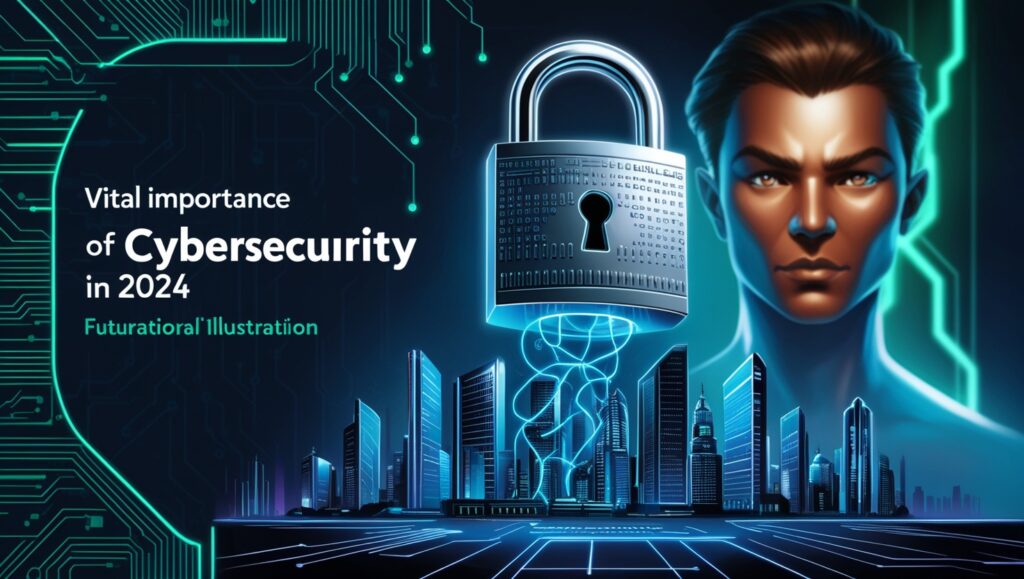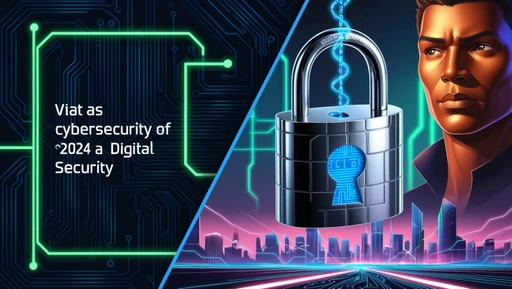Cybersecurity in 2024: Protecting Data in an Increasingly Digital World

As the digital landscape evolves, so do the threats to cybersecurity. In 2024, businesses, governments, and individuals face an unprecedented wave of cyber challenges fueled by advanced technologies and sophisticated attackers. With more people relying on digital platforms for work, communication, and commerce, protecting data has become a critical priority. This article explores the current state of cybersecurity, emerging threats, and the strategies needed to safeguard data in an increasingly connected world.
1. The Cybersecurity Landscape in 2024
a. The Growing Threat Environment
- Increased Cybercrime: Cyberattacks, including ransomware, phishing, and data breaches, have risen exponentially, targeting industries of all sizes.
- Sophisticated Attack Methods: Hackers now use artificial intelligence (AI) to create more convincing phishing scams, evade detection, and launch complex cyberattacks.
- Expanding Attack Surfaces: The proliferation of Internet of Things (IoT) devices, remote work setups, and cloud computing has increased vulnerabilities.
b. Key Statistics Highlighting the Issue
- Global cybercrime costs are projected to exceed $10 trillion annually by 2025.
- Over 80% of businesses experienced a cybersecurity breach in the past year.
- Phishing attacks account for more than 90% of data breaches.
2. Emerging Cybersecurity Threats

a. Ransomware as a Service (RaaS)
Cybercriminals now offer ransomware tools to non-technical users, making attacks more accessible. These attacks often target critical infrastructure, such as healthcare and energy sectors.
b. Deepfake Technology
Deepfakes are being used to impersonate executives, enabling attackers to manipulate employees and steal sensitive information.
c. Supply Chain Attacks
Hackers infiltrate software or hardware vendors, using their networks to compromise downstream customers.
d. Quantum Computing Threats
While still emerging, quantum computing poses a potential risk to encryption methods, which could render traditional security measures obsolete.
3. Strategies for Enhanced Cybersecurity
a. AI and Machine Learning in Defense
AI-powered tools are increasingly vital for detecting and mitigating threats. Key applications include:
- Behavioral Analytics: Monitoring user behavior to identify anomalies indicative of potential breaches.
- Automated Incident Response: Swiftly reacting to detected threats without human intervention.
b. Zero-Trust Architecture
Organizations are adopting zero-trust models where every user, device, and application must be authenticated and authorized before access is granted.
c. Multi-Factor Authentication (MFA)
MFA adds an extra layer of protection, ensuring that even if passwords are compromised, unauthorized access is prevented.
d. Employee Training
Human error remains a leading cause of cybersecurity breaches. Regular training helps employees recognize phishing scams, use strong passwords, and follow best practices.
e. Encryption and Data Privacy
Encrypting sensitive data ensures that even if attackers gain access, the information remains unreadable.
f. Cybersecurity Frameworks
Adopting frameworks like NIST (National Institute of Standards and Technology) or ISO/IEC 27001 helps organizations establish robust security practices.
4. The Role of Governments and Regulations
Governments worldwide are taking steps to enhance cybersecurity through:
- Data Protection Laws: Regulations like GDPR (General Data Protection Regulation) and CCPA (California Consumer Privacy Act) hold organizations accountable for safeguarding user data.
- Cybersecurity Task Forces: National initiatives to combat cybercrime and protect critical infrastructure.
- Global Collaboration: Nations are working together to share intelligence and respond to cross-border cyber threats.
5. The Future of Cybersecurity
The next frontier of cybersecurity will focus on:
- Post-Quantum Cryptography: Developing encryption methods resistant to quantum computing attacks.
- Biometric Authentication: Using unique physical characteristics, such as fingerprints or retinal scans, for secure access.
- Decentralized Security Solutions: Blockchain technology offers promising applications in secure data storage and identity verification.
- Cyber Resilience: Beyond prevention, businesses will focus on rapid recovery from attacks to minimize damage.

Conclusion
In 2024, cybersecurity is a race against time as attackers and defenders leverage cutting-edge technology in a high-stakes battle. Protecting data is no longer optional—it’s essential for maintaining trust, ensuring business continuity, and safeguarding personal and organizational integrity. By adopting advanced defense strategies, fostering a culture of security awareness, and staying ahead of emerging threats, we can navigate the digital age with confidence. As the cybersecurity landscape continues to evolve, vigilance and innovation will be key to building a safer digital world.






